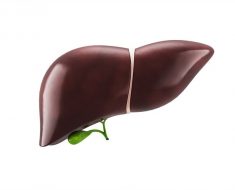September marks Urology Awareness Month – an initiative that aims to help people can spot the symptoms of any problems early and seek treatment.
For those not medically clued-up, the term ‘urology’ refers to the surgical and medical diseases of the male and female urinary-tract system as well as male reproductive organs. So, both men and women should listen up when it comes to urology health.
As always, it’s important to understand your body but wee can be a crucial indicator that something is wrong.
So it’s paramount to understand the different shades of urine and differentiate between when its lifestyle factors changing the colour and when it might be down to a health problem.
We’ve spoken to medical professionals to get their advice on healthy shades of urine and when it’s best to consult a GP.
Pale yellow
Dr Arun Thiyagarajan, Medical Director (UK) Health Clinics at Bupa UK, told Metro: ‘Urine contains a yellow pigment called urochrome, and its shade depends on how diluted or concentrated your pee is.
‘If you drink more [water], this dilutes the yellow pigments, making your urine look clearer.’
A pale yellow urine is what everyone should be aiming for according to medical professionals – as a pale straw colour shows an individual is drinking enough fluids and that the body is adequately hydrated.
Dr Arun Thiyagarajan adds: ‘If your urine is slightly darker than pale straw in shade, this suggests that you’re mildly dehydrated and could do with drinking a glass or two of water to replenish your fluids.’
Clear/transparent
Drinking plenty of water is great, marvellous in fact, but it’s important not to overload on it.
Yes, there is such a thing as water overkill and urine that is extremely pale or transparent looking can be a telltale sign of this.
Dr Arun Thiyagarajan says: ‘Pee that’s really pale or even transparent in colour is a sign that you may be drinking more than you need to, especially if you’re needing to pee frequently.
‘In extreme cases, drinking too much water can be dangerous as it can cause your blood’s salt levels to fall too.’
Basically, a hint of yellow is perfect.

Dark yellow/amber
Dark yellow or amber looking wee can be a sign of dehydration.
This often happens after a night out or when you’re feeling under the weather and is a sign that your body needs a top up of water in order to function better.
‘It may be useful to add a rehydration sachet to your water to help quickly replace the important salt and sugars that your body has lost,’ says Dr Arun Thiyagarajan.
Orange
Severe dehydration is a common cause of orange-coloured urine but, in some cases, it can indicate a medical problem with your liver or bile duct – especially if you also have light-coloured stools. This could mean that bile is getting into your bloodstream.
If you’re staying hydrated and orange urine persists, it’s best to book up an appointment with the GP.
Coloured (e.g. green, blue)
Firstly, don’t be alarmed if your pee is green or blue. Some foods, certain bright-coloured food dyes and a handful of medications can all cause your urine to change colour.
However, if there’s no obvious reason for the change, it’s best to get it checked with your GP.
Dark brown or coke-colored
As well as being a sign of dehydration, darker urine can also be caused by some liver and kidney disorders, as well as some urinary tract infections.
Cloudy
Wee that is cloudy or murky can be a sign of a UTI, especially if it comes with other symptoms such as a frequent urge to go and a burning sensation when passing urine.
Kidney stones is another possible reason behind cloudy urine.
Blood in urine
Blood in urine can be a symptom of bladder cancer. Other possible causes include urinary tract infection (UTI), kidney infection, enlarged prostate, kidney or bladder stones or conditions such as polycystic kidney disease. Sickle cell anemia can also be behind it.
Dr. Mitchell Humphreys of the Mayo Clinic said: ‘Blood in the urine that’s clearly visible is called gross hematuria. To determine what is causing the hematuria, your health care provider may first order a urine test to determine if bleeding is caused by a urinary tract or kidney infection.
‘The risk of hematuria being an indicator of cancer somewhere in the urinary tract increases after age 40. And, in most cases, it’s the first symptom.
‘It’s also fairly common for no cause of hematuria to be found.’
If you see blood in your urine it’s always best to make an appointment with your GP, to rule everything out.
Source: Read Full Article





